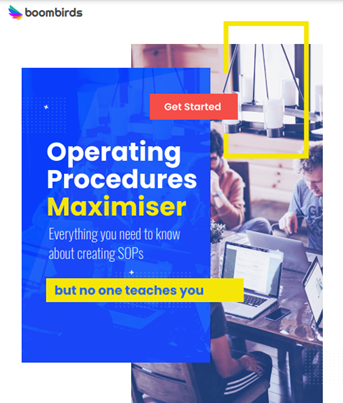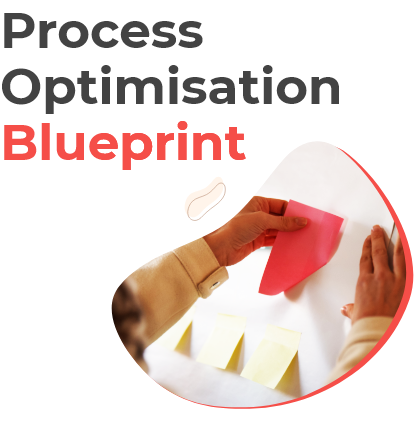10 Steps to Improve Processes, Increase Efficiency & Achieve Your Goals
Process improvement is never-ending. You can always improve how you do things in order to achieve your goals more efficiently and effectively. This blog post shares 10 steps that will help firms increase their process efficiency so they can reach their business goals!
Defining Business Process Improvement (BPI)
A process is a set of activities that are performed to achieve a goal. Processes can be formalised and documented, or informal processes which may not have been written down at all.
Business process improvement (BPI) generally refers to improving the efficiency of business operations by making improvements in process flow-throughs for tasks, documents, and service.
Reaching the next level of success for your company can be a difficult feat. Yet, by implementing business process improvement (BPI), you are one step closer to becoming an industry leader!
Business Process Improvement is saving businesses time and money while boosting productivity in areas where it’s most needed.
By analysing processes that could benefit from improvements such as accuracy, effectiveness or efficiency; leaders using this approach will redesign those parts of their enterprise workflow so they work more efficiently before re-releasing them back into the larger system with fewer errors.

Business process improvement, or BPI for short, is a way of identifying which operations are not functioning efficiently and make changes in order to achieve smoother procedures. This can have a direct impact resulting in more efficient workflow as well as growth within your business.
Continuous Improvement Methodology
Continuous improvement is the process of refining business processes and improving efficiency. It is a process that is never done, organisations need to work to improve processes each day to achieve better results.
This concept is a part of process improvement that must never be forgotten. It is a process that needs to be done over and over again in order to keep business flowing the way it should.
Continuous improvement at its core is about process improvement. Continuously improving processes is the best way to take your business process and bring it up to date in order for them to become more efficient.
Process Improvement Projects
A process improvement project can take shape in many different ways. When an organisation decides they want to improve process, someone must step up as the champion for this mission. Once identified, a process improvement team will usually apply Lean or Six Sigma to the business processes in question.
The process team will then do their best to identify opportunities to improve processes. They’ll look at how many steps are needed, where there is redundancy in those processes and what can be done to eliminate waste in order to reduce cost or increase efficiency.
What are the steps to improve process?
So, how do organisations get started to improve processes?
There are ten steps to improve processes that you should apply:
1. Develop the Process Inventory
As with most projects, this step involves figuring out where to start. The first thing to do is to which tasks needs the most immediate attention .
Find the process owner – This is who knows the process best. They are usually at the heart of it and will be able to identify any inefficiencies or process problems with ease.
2. Establish the Foundation
To avoid scope creep, it’s important to have a blueprint before starting any improvement effort. The scope definition document lays out the specifics of what an organisation hopes to achieve and is essential in order for this goal to be reached.
After determining your focus area, take time to establish the scope by writing down all potential improvements that may seem relevant but are not part of the current priority list. This will help define boundaries as well as ensure you don’t inadvertently add new changes into your plan once they’ve been completed!
3. Draw the Process Map
Flowcharting and Documenting — This step involves mapping the business process so everyone involved understands how it works. Flowcharts contain arrows to show handoffs between departments, which helps team members know where they are in the workflow at any given time. Equally Standard Operating Procedures (SOPs) are a great way to document the process.
Document your business processes with this FREE template:

4. Estimate Time and Cost
The first thing to understand about the process is that it’s always in flux. Employees come and go, tasks change, and new technology emerges all the time. This makes determining an exact cycle time for a given business process difficult; however there are some general observations we can make from our experience with tracking actual data on previous projects:

– If multiple people need to be involved then processes have variable lengths depending upon how many contributors are required at different points in their workflow
5. Verify the Process Map
Review the process map to make sure it accurately reflects what’s going on in reality. Process mapping is an iterative process, so it’s possible that the process map will need to be updated as you find out more about how your process flows
– If it doesn’t reflect reality then update or rework the process map
– Document any changes in a new version of the process map and post this on a shared drive for all team
6. Apply Improvement Techniques
To make your company more successful, you should consider implementing some or all of these six improvement techniques.
– Benchmarking: the process of comparing your process with others in order to identify opportunities for improvement.
– Kaizen: a process that is focused on continual incremental improvements and taking action continuously without delay.

–Six Sigma methodology : this process is focused on achieving process excellence and continuous improvement.
– Lean methodology: it focuses on eliminating waste in all of its forms, whether that be time, materials or anything else.
– Root cause analysis: the process of identifying what caused a problem to happen so you can take corrective action.
7. Create Internal Controls, Metrics and Tools
This step is about minimising possible errors, identifying process metrics and creating tools to automate the business process. These are all important steps in order for your company to be successful!
Boombirds helps operations leaders to digitise their manual processes and is an easy to use process management software that provides a low cost solution for process monitoring, process control and process optimisation.
Companies should explore the potential of BPM technology in order to increase their operational efficiency and continuously improve all business processes.
8. Test and Rework
The team should take the time to test out their new process, because it is very important for things to work as planned. Evaluation and analysis are crucial to the success of quality management.
9. Implement with Change Management
Communication is the key to everything. From knowing who needs to know, what they need to know and how you should be communicating it; communication can make or break a company’s future success and you should never underestimate the positive impact of strong communication and change management for any process improvement initiatives.
10. Drive Continuous Improvement
Continuous improvement can be difficult and challenging at times, but it is possible with hard work and perseverance.
One way of improving through continuous improvement might be by setting goals that you would like to accomplish every day or week instead of having huge long term aspirations which are often too daunting for some people’s comfort levels.
These 10 steps should help you to understand what it takes to improve process, increase efficiency and achieve your business’s operational and strategic goals.
So be sure to find out more about how our no code platform can do the heavy lifting for you to optimise your operations, making sure your team is working on the right things, at the right time and following the right procedures.
Are you tired of…Messy, manual processes that can't be scaled?
We work with operations leaders looking to digitally transform their manual back-office processes and procedures.
We combine your existing business processes with our software, plus decades of enterprise process re-engineering and change management experience to quickly scale and see the results you are looking for.





